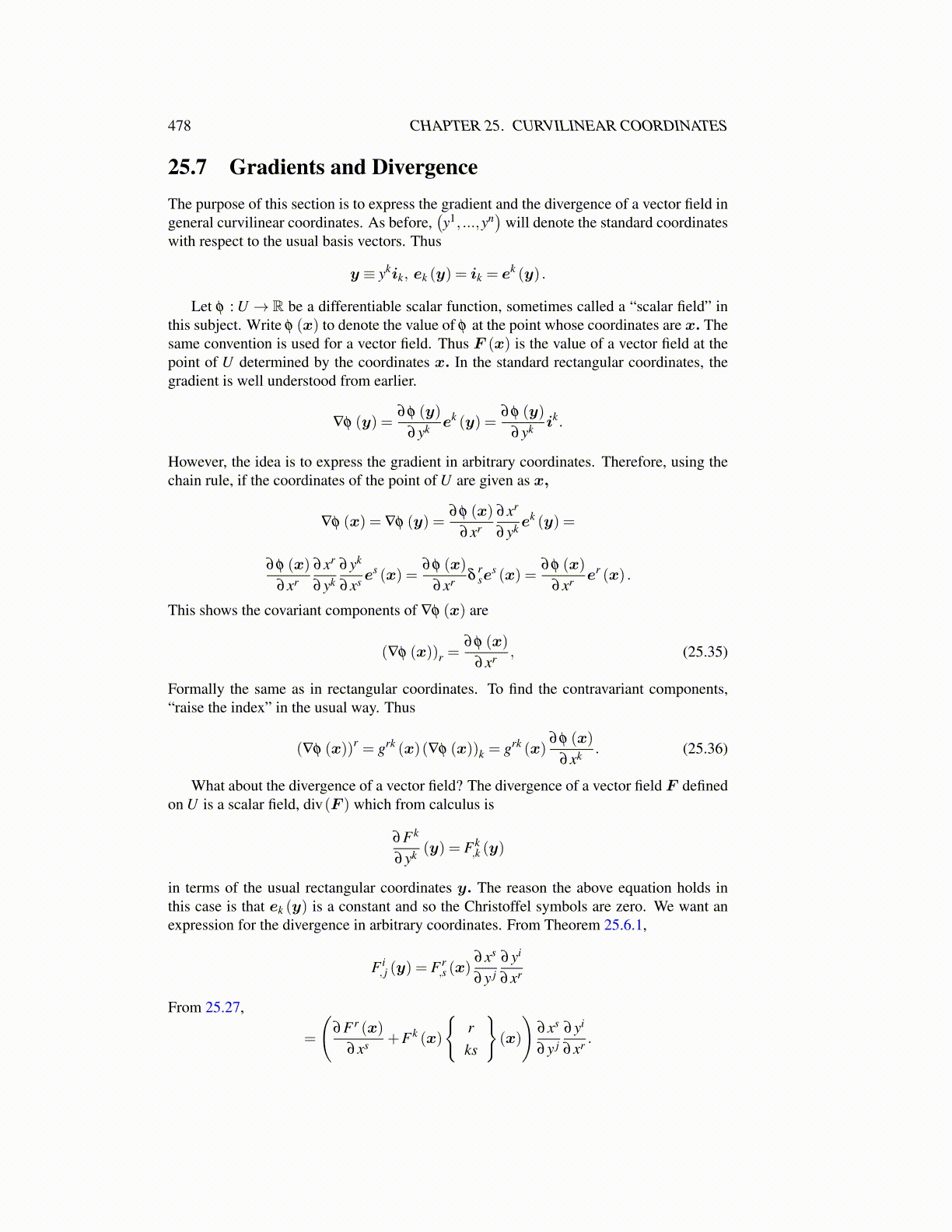
478 CHAPTER 25. CURVILINEAR COORDINATES
25.7 Gradients and DivergenceThe purpose of this section is to express the gradient and the divergence of a vector field ingeneral curvilinear coordinates. As before,
(y1, ...,yn
)will denote the standard coordinates
with respect to the usual basis vectors. Thus
y ≡ ykik, ek (y) = ik = ek (y) .
Let φ : U → R be a differentiable scalar function, sometimes called a “scalar field” inthis subject. Write φ (x) to denote the value of φ at the point whose coordinates are x. Thesame convention is used for a vector field. Thus F (x) is the value of a vector field at thepoint of U determined by the coordinates x. In the standard rectangular coordinates, thegradient is well understood from earlier.
∇φ (y) =∂φ (y)
∂yk ek (y) =∂φ (y)
∂yk ik.
However, the idea is to express the gradient in arbitrary coordinates. Therefore, using thechain rule, if the coordinates of the point of U are given as x,
∇φ (x) = ∇φ (y) =∂φ (x)
∂xr∂xr
∂yk ek (y) =
∂φ (x)
∂xr∂xr
∂yk∂yk
∂xs es (x) =
∂φ (x)
∂xr δrse
s (x) =∂φ (x)
∂xr er (x) .
This shows the covariant components of ∇φ (x) are
(∇φ (x))r =∂φ (x)
∂xr , (25.35)
Formally the same as in rectangular coordinates. To find the contravariant components,“raise the index” in the usual way. Thus
(∇φ (x))r = grk (x)(∇φ (x))k = grk (x)∂φ (x)
∂xk . (25.36)
What about the divergence of a vector field? The divergence of a vector field F definedon U is a scalar field, div(F ) which from calculus is
∂Fk
∂yk (y) = Fk,k (y)
in terms of the usual rectangular coordinates y. The reason the above equation holds inthis case is that ek (y) is a constant and so the Christoffel symbols are zero. We want anexpression for the divergence in arbitrary coordinates. From Theorem 25.6.1,
F i, j (y) = Fr
,s (x)∂xs
∂y j∂yi
∂xr
From 25.27,
=
(∂Fr (x)
∂xs +Fk (x)
{rks
}(x)
)∂xs
∂y j∂yi
∂xr .